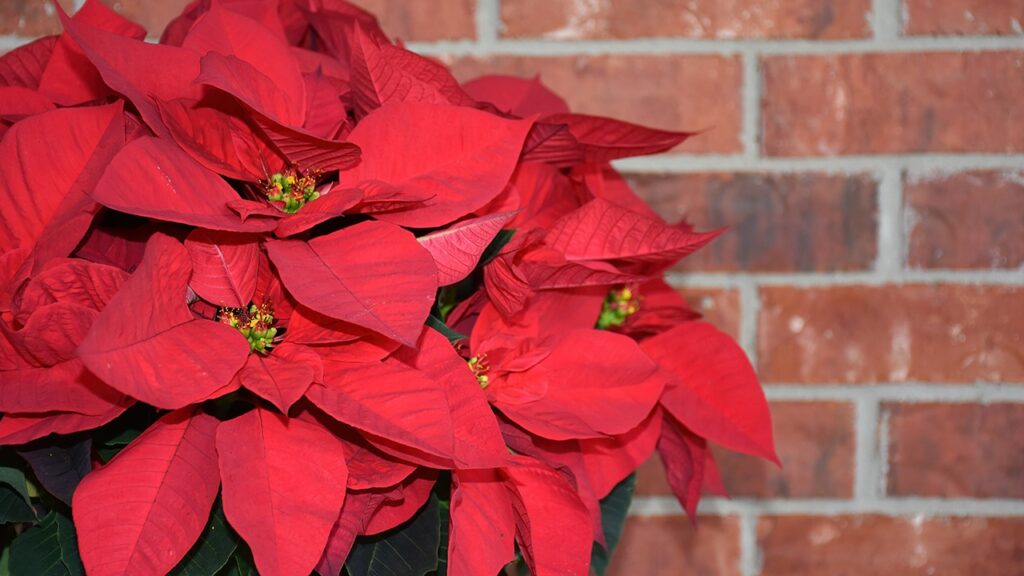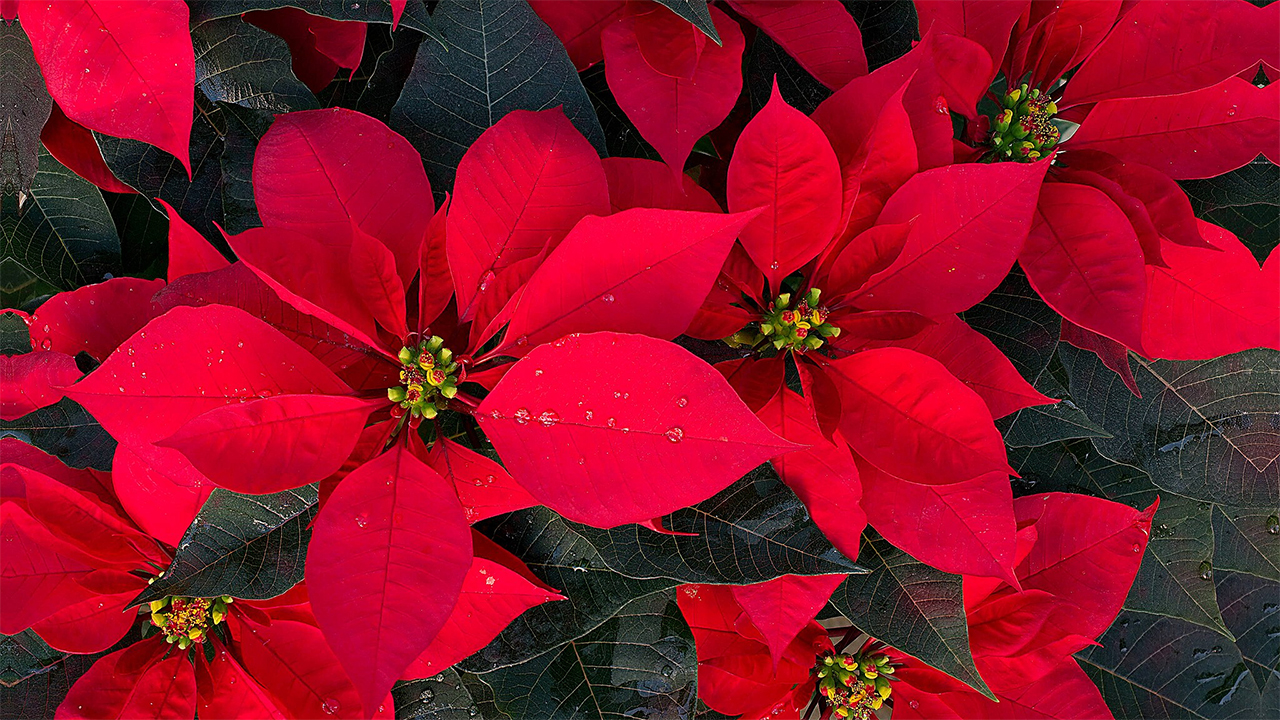How do you take care of a poinsettia indoors?
Here are some quick tips on poinsettias care:
Taking your new plant from a warm store to your car in a cold parking lot can be a bit tricky, as the sudden temperature change might cause it to lose leaves. To prevent this, especially in colder climates, consider protecting your plant with a bag or some paper if it’s going to be exposed to the cold for more than a couple of minutes.
For optimal indoor conditions, aim for temperatures between 55°F and 75°F. Be cautious of cold drafts from doors and windows, as well as the heat from vents, radiators, and fireplaces. Maintaining the right environment will keep your plants healthy and thriving.
If your plant is in a pot without drainage holes, it could lead to issues like yellow leaves, leaf-drop, or root rot. Solve this problem by adding a few holes to the container or transferring your plant to one with proper drainage. If you use a saucer or decorative pot sleeve, be sure to empty any excess water.
Balancing your watering routine is crucial. While these plants have some succulence, wait to water until the pot feels light, the plant becomes top-heavy, or the soil feels dry to the touch. Keep the soil consistently moist but not waterlogged.
During the blooming period, there’s no need to fertilize your plants. Poinsettia colors tend to fade by February. If you’re looking to keep a plant for its green leaves or encourage it to rebloom, start fertilizing around May. However, if you prefer to avoid the extra effort, feel free to compost your plant after the holidays. Even seasoned gardeners treat themselves to a fresh poinsettia each year.

Did you know that the poinsettia's main attraction is not its flowers, but its leaves?
The flowers of the plant are the yellow clustered buds in the center (termed “cyathia”). The colored leafy parts are bracts or modified leaves that turn color in response to the plant forming flowers.
When buying a poinsettia, make sure it has the buds, preferably not yet open.
Red is the most popular color, accounting for roughly three-quarters of all sales nationwide, followed by white and pink. There are more than 100 varieties of poinsettias in a range of colors from red, salmon, and apricot to yellow, cream, and white (but not blue -these are a designer color created with dyes).
There are also unusual speckled or marbled varieties with several colors blended together and new varieties are introduced yearly.
According to the USDA Floriculture Statistics report, poinsettias accounted for about one-quarter (23 percent) of sales of all flowering potted plants; that’s $144 million out of a total of $618 million in sales of all flowering potted plants. Poinsettias remain the highest selling potted flowering plant.
Of the traditional crops, Easter lilies are a distant second with $22 million in sales. Potted orchids are higher-value plants, so rated second in value ($186 million in sales), but a mere 23 million were sold.
Although every state in the United States grows poinsettias commercially, California is the top producer with over 6 million pots grown, followed by North Carolina with 4.4 million pots sold, and Texas with about 3.7million. Florida and Ohio, are next with over 3 million poinsettias sold.
History of the Poinsettia

About The Author
John Bagnasco has been in the gardening industry for over 50 years, starting with a horticulture degree from Michigan State University and following a stint at Frank’s Nursery and Crafts in Detroit.
After publishing his first book “Plants for the Home Vol. I” in 1976, he moved to California to become regional manager and buyer for the Nurseryland division of Sunbelt Nursery Group.
He then became the head buyer for Armstrong Garden Centers based in Glendora, California. John had a part-time affiliation with Creative Promotions for ten years before joining them full-time in October 2000 as a senior editor and radio personality for Garden Compass.
John has also taught horticulture classes at Palomar College and San Diego State University.
He is the host of the DVD “The Essential Guide to Roses,” which also features Bryan Main and Bruce and Sharon Asakawa.
His most recent book is “Planting Designs for Cacti and Succulents”.
Currently, John is a co-host on “Garden America,” an interactive live gardening show that additionally provides podcasts of the broadcasts accessible on all major platforms.
You can contact John here.

